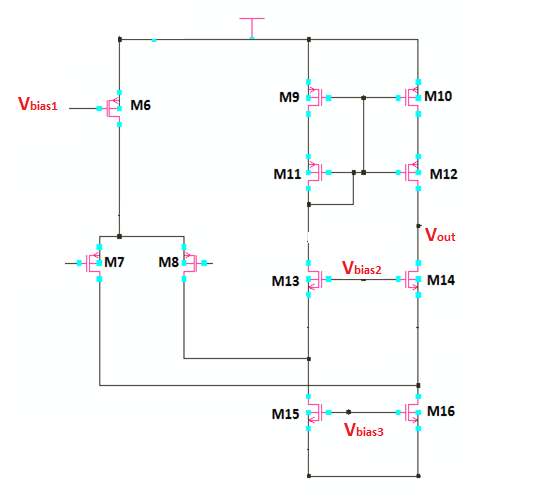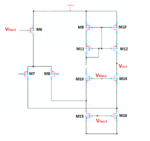anhnha
Full Member level 6

This is a folded cascode amplifier with the gain formula as follows:
Av = gm7*[gm12*rds12*rds10 || gm14*rds14*(rds16 || rds7)]
Is there a systematic way to size components so that voltage gain is as high as possible?
I am thinking about gm/Id method but how can I get load capacitance CL?
This op amp will be used for LDO but I am not sure how CL would be.

Av = gm7*[gm12*rds12*rds10 || gm14*rds14*(rds16 || rds7)]
Is there a systematic way to size components so that voltage gain is as high as possible?
I am thinking about gm/Id method but how can I get load capacitance CL?
This op amp will be used for LDO but I am not sure how CL would be.









